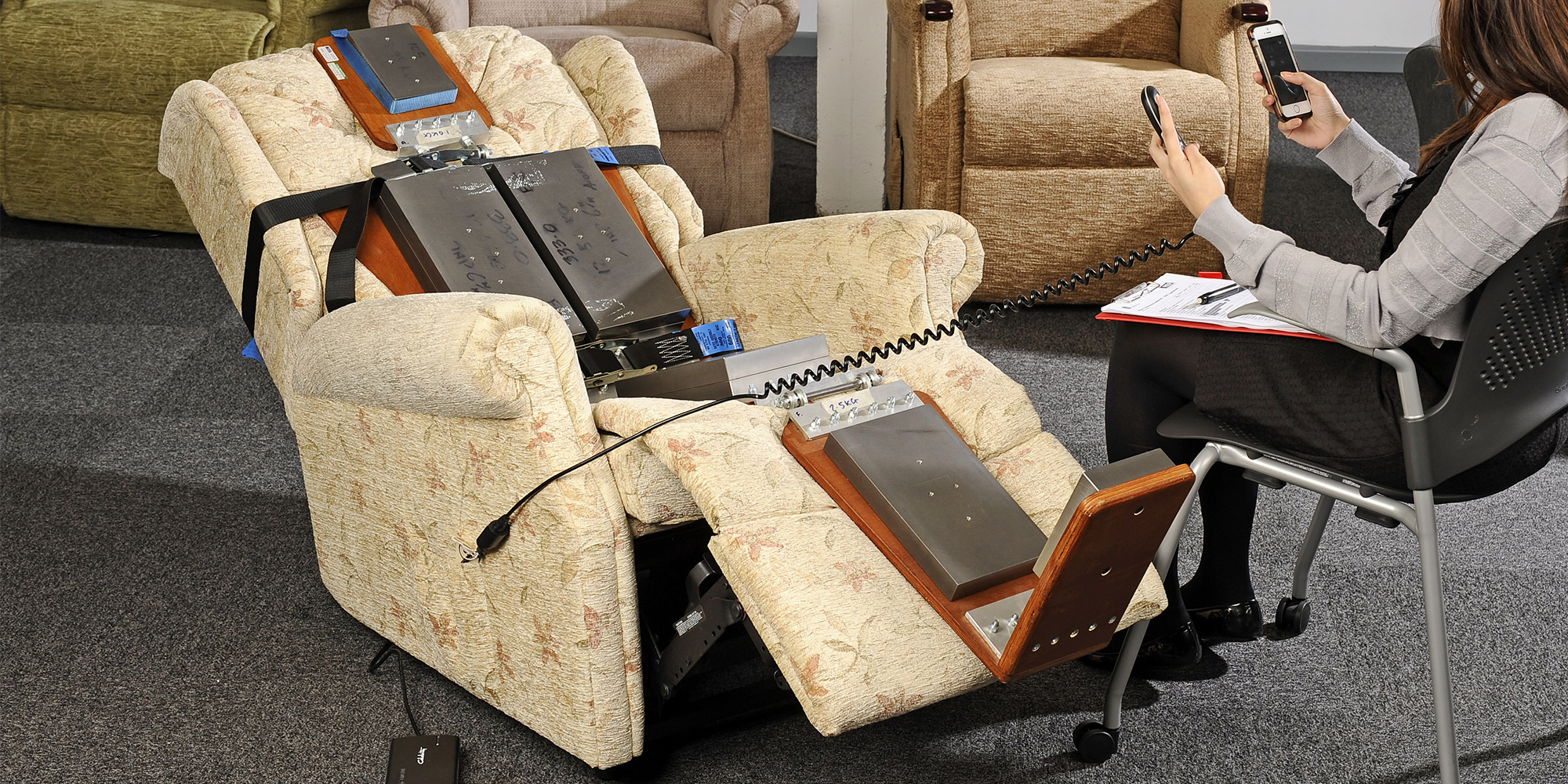BS EN 1728 Furniture Seating Mechanical Strength Testing for Recliners
The British Standard/EN 1728 test is a critical procedure in the quality assurance and compliance processes of furniture manufacturers, especially those dealing with recliners and adjustable seating. This standard ensures that the mechanical strength of the components within these recliners meets stringent safety requirements. Compliance with this standard is essential for product reliability, consumer safety, and regulatory adherence.
The test involves subjecting a specified type of specimen to various loading conditions intended to replicate real-world stress scenarios. The goal is to determine how well the furniture withstands repeated adjustments such as reclining, lifting, and lowering actions without compromising structural integrity or causing injury.
Manufacturers who adhere to this standard benefit from enhanced brand reputation, increased consumer trust, and a competitive edge in the marketplace. It also helps them avoid potential product recalls and liability issues associated with unsafe furniture.
To perform this test correctly, it is crucial to understand the specific requirements laid out by BS EN 1728. This includes knowing which components must be tested (e.g., frame, arms, footrests), how much force should be applied during different stages of testing, and what kind of instrumentation will provide accurate measurements.
For instance, when evaluating the strength of a recliner’s backrest mechanism, you would apply incremental forces until failure or permanent deformation occurs. Similarly, for armrests, you might simulate someone lifting their legs by applying a certain weight at various angles.
The results from these tests are then analyzed to ensure they meet all specified criteria outlined in the standard. Any deviations may indicate areas where improvements could be made either during design stages or manufacturing processes.
By ensuring compliance with BS EN 1728, furniture manufacturers demonstrate their commitment to producing high-quality products that not only look good but also perform safely and reliably over time.
| Applied Standards |
|---|
| BS EN 1728:2013 |
Applied Standards
The primary standard applied for this testing is BS EN 1728:2013. This European Norm specifies the methods for determining the mechanical strength of seating furniture, including recliners and adjustable chairs. It covers various aspects such as load application procedures, specimen preparation instructions, permissible limits for deformation under load, and criteria for interpreting test results.
The standard aims to provide a consistent approach across different countries within Europe so that manufacturers can easily compare performance data regardless of geographical location or local regulations. This harmonization helps streamline quality assurance practices and facilitates international trade in furniture products.
| Applied Standards |
|---|
| BS EN 1728:2013 - European Norm for Seating Furniture Mechanical Strength Testing |
| ISO 9241-7:2006 - Ergonomics of Human-System Interaction – Part 7: Requirements for Office Furniture |
Scope and Methodology
The scope of BS EN 1728 testing encompasses the mechanical strength evaluation of various components found in recliners, such as frames, arms, footrests, and backrest mechanisms. The methodology involves subjecting these parts to controlled loads designed to mimic typical usage patterns experienced by end users.
- Frame Testing: Simulates the weight distribution when someone sits on the chair or adjusts its position.
- Armrest Strength: Measures resistance against forces exerted while using armrests for support during reclining actions.
- Footrest Stability: Assesses stability under load to prevent accidental collapse which could result in injury.
The testing protocol typically includes several stages, each focusing on different aspects of the furniture’s structural integrity. For example, one stage might involve applying a specified amount of weight at various points along the frame while another checks for any signs of deformation after prolonged exposure to these loads.
- Initial Inspection: Ensures all components are correctly assembled and free from defects.
- Loading Application: Gradually increases applied force according to predefined schedules until failure or specified limits are reached.
- Data Collection & Analysis: Records measurements throughout the process, comparing them against accepted tolerances outlined in the standard.
Once testing is complete, detailed reports are generated summarizing findings. These documents serve multiple purposes including documentation for internal quality control records, supporting marketing claims about product durability, and providing evidence during compliance audits conducted by regulatory bodies.
| Scope and Methodology |
|---|
| Testing Components: Frames, arms, footrests, backrest mechanisms |
| Loading Patterns: Simulating real-world adjustments like reclining and lifting actions |
| Force Application: Incremental increases until failure or permanent deformation occurs |
| Data Recording: Continuous monitoring of structural performance during testing |
Environmental and Sustainability Contributions
- Reduced Waste: By ensuring proper design and material selection through rigorous mechanical strength tests, there is less likelihood of premature product failure leading to unnecessary replacements.
- Energy Efficiency: High-quality furniture that passes these tests tends to be more durable, reducing the frequency of replacements which in turn lowers overall energy consumption associated with manufacturing new items.
- Resource Conservation: Ensuring long-lasting products means fewer resources need to be extracted and processed, contributing positively towards sustainability goals set forth by various environmental initiatives.
- Regulatory Compliance: Meeting standards like BS EN 1728 helps companies avoid penalties related to non-compliance with local or international regulations regarding product safety and quality.
- Market Differentiation: Demonstrating adherence to recognized testing protocols can give manufacturers a competitive advantage in attracting eco-conscious consumers who value sustainable practices.





